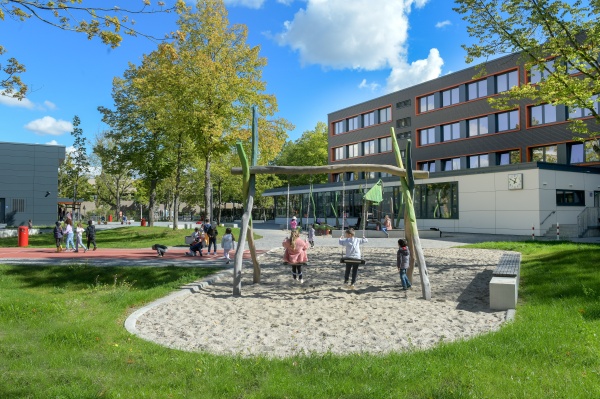New school, new luck
Wenn es eng wird im eigenen Haus, weil die Familie wächst, ist es Zeit für einen Wohnungswechsel. Besteht gar die Möglichkeit für einen Neubau, umso besser, lassen sich doch so...


YOUR FORUM FOR PLAY, SPORTS UND LEISURE AREAS

2016 until 2021
We go back to the year 2006 when the strong population growth that Berlin will have in the next few years is not yet an issue. In Wartenberg, a district of the Berlin suburb of Lichtenberg, the primary school at Wartiner Straße 6 is closed: there are not enough pupils in that area. The school building and sports hall are closed, the grounds fall into a deep slumber and nature starts to recover large parts of this site.
Ten years later, in 2016, the primary schools in this area are now bursting at the seams. Many new flats and single-family homes are being built in the district of Lichtenberg and the number of pupils is rising quickly. The municipality decides to reactivate the school site by opening a two-and-a-half-grade primary school with open all-day classes. In the future, 320 children between the ages of 6 and 12 will fill this site with life again, together with their teachers and educators.
The school building and the sports hall, typical prefabricated buildings of the former GDR era, are still in good condition despite being vacant and will thus be renovated and supplemented by a canteen extension. However, the schoolyard has been overgrown with scrub due to its vacancy in the past 10 years. Even at a closer look, the playground and the sports facilities can only be guessed between the largely grown trees.
In the course of a multi-stage application procedure, the landscape architects hochC PartGmbB were awarded the contract for the open space planning.
When designing the concept for the new schoolyard it should be considered to preserve as much of the rich and partly old tree population as possible. In view of the space required for the playground and sports fields, this was a challenge that was ultimately mastered by slightly changing the floor plan of the school grounds: the Street and Green Spaces Office was willing to allocate parts of the public green space to the school grounds - a district-internal administrative assistance to the School and Sports Office.
Our aim was to preserve the green and tree-covered character of the open space. Existing trees were embedded in green islands and thus create a varied spatial structure.
The green islands in the courtyard also serve as infiltration areas. As little rainwater as possible should be fed into the sewage system, even though the subsoil survey showed poor infiltration values. Therefore, a permeable paving with a large number of joints was chosen. Wherever feasible, the water running off the surfaces is channelled into large, shallow hollows where it can slowly seep away or evaporate in the form of surface infiltration.
Through the arrangement of the green islands and the use of the open space behind the sports hall, exciting spaces of different sizes are created in the schoolyard, which allow individual appropriation by the young students: there is a large, continuous courtyard area for running and frolicking as well as a circuit around the sports hall. Between the green islands, niches and spaces open up for quieter, more secluded activities. Concrete walls along the edges of the islands can be used for sitting, but also for climbing, balancing, etc.
The children also like to use the paved areas to drive all kinds of vehicles, which can be borrowed during breaks and after-school activities.
In order to provide interesting play opportunities for children from the first to the sixth grade, two playground areas were added to the school yard. A climbing playground invites the older children to play whereas the lower rope net installation is also playable for younger children.
The playground equipment is mainly made of Robinia heartwood and glazed in blue-green shades in line with the natural surroundings of the old existing trees. The large climbing playground offers challenges for balancing with various high Robinia wood beams. These alternate with interspersed platforms, nets, ropes and climbing rings. A climbing and sliding pole as well as a slide were integrated into the play area to allow varied and diverse play sequences.
The smaller children balance at a lower height and with additional holding ropes. They are also challenged by an obstacle course on small stilts and a climbing wall integrated into the playground. The wobbly salamander is also particularly popular among the younger children. Several children can sit on it at the same time. In this way, they are motivated to play together.
All the playground equipment was individually designed and built for this facility. The play facilities in the courtyard are particularly important because most of the children attend the after-school care centre and use the open space to play in the afternoon.
The small playing field with EPDM surface can be used during breaks and after-school activities, the fence is open to the schoolyard. To enable various ball sports on the field, there are floor markings in different colours for different sports. Ground sockets with EPDM covers make it possible to set up volleyball posts as well as other similar equipment elements.
The adjacent running track leads into an unusual jumping pit: instead of jumping into the classic, rectangular long jump pit, here the children jump into another sand-filled play island, in which there is also a large swing (with sufficient safety distance, of course). In this way, areas can be used multifunctionally, no space is wasted. Multifunctional, multi-coded areas are essential at a time when open spaces in the city are becoming increasingly scarce and must be used in a sustainable way.
Some elements from the original schoolyard design could be saved for the new school era: some boulders were secured and re-set to form a stone circle/meeting point on a spacious meadow area. Here, it is also possible to create a school garden in the future.
Since many children will come to school by bicycle in the future - the catchment area is designed accordingly in the large district of Lichtenberg - a large number of bicycle holders have been integrated under the existing trees near the main entrance. In order to protect the tree roots, a gravel lawn surface is planned in this area.
The newly designed forecourt - coming from Wartiner Straße - will be designed as a generous open space. The numerous plane trees provide the square area with shade. It leads to the school's new main entrance, which is designed as an extension with a wide flight of steps and a barrier-free ramp. The paving used for the paved areas is irregularly shaped and, in terms of design, resembles an island concept. In addition to preserving the old trees, 6 new trees were planted.
In the peripheral areas of the school grounds, the shrub plantings should both serve as shields and create space. The central green areas of the schoolyard are largely grass areas that are also available to the children as play areas. The playing area to the south of the small playing field is also to be used as a sports and gymnastics field if required.
The guiding principle of the landscape architects of hochC is Togetherness.Sustainability.Design. In order to integrate sustainable working criteria into planning processes in a time-saving and creative way, hochC has recently developed an object-oriented sustainability tool, the so-called touchstone, which provides an entertaining and visually appealing working tool alongside the otherwise rather formal and tabular evaluation systems, as a kind of low-threshold supplement to BNB, DGNB, LEED or BREEAM. Magnetic touchstones with sustainability symbols representing the environmental, economic and social pillars of sustainability, as well as process quality and technical quality, are placed thematically on the "playing field" of the respective project site plan. All aspects of sustainability are thus specifically considered and those not taken into account are discussed: Can, for example, the touchstones "reuse of building materials", "multiple use" or "accessibility" be placed on the project playing field even more frequently? At hochC we are currently working with a prototype of this sustainability tool, which in future will be used internally in all hochC projects in various performance phases and, if possible, also with planning participants and clients. In the case of the Wartiner Strasse schoolyard, we were only able to use touchstone in the late project phase which enabled us to still integrate some sustainability aspects into the project work that would otherwise probably have been ignored.